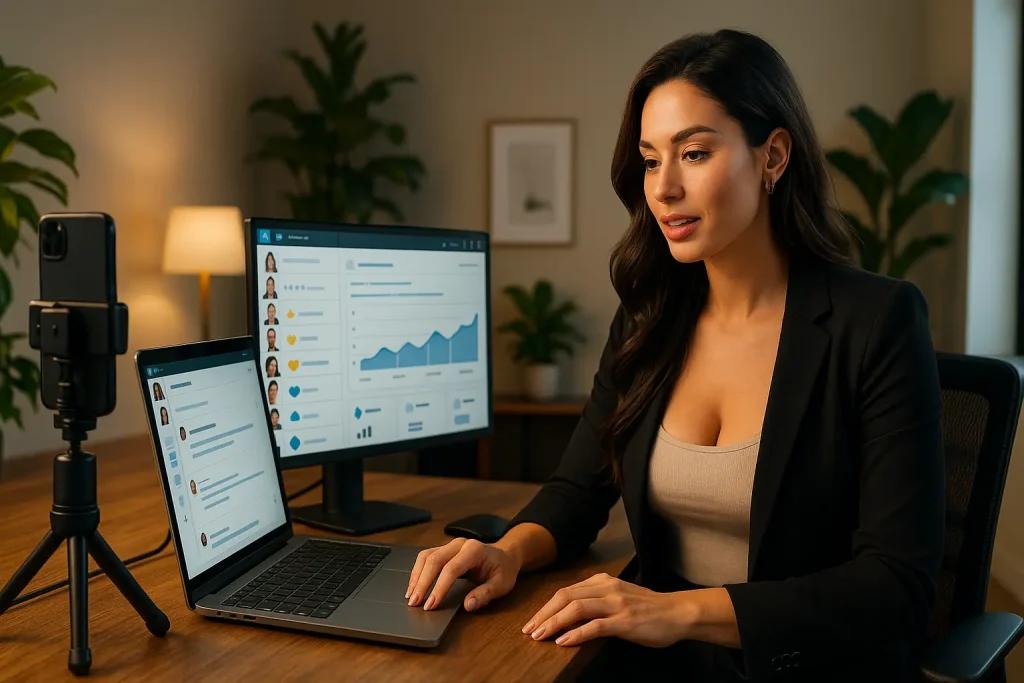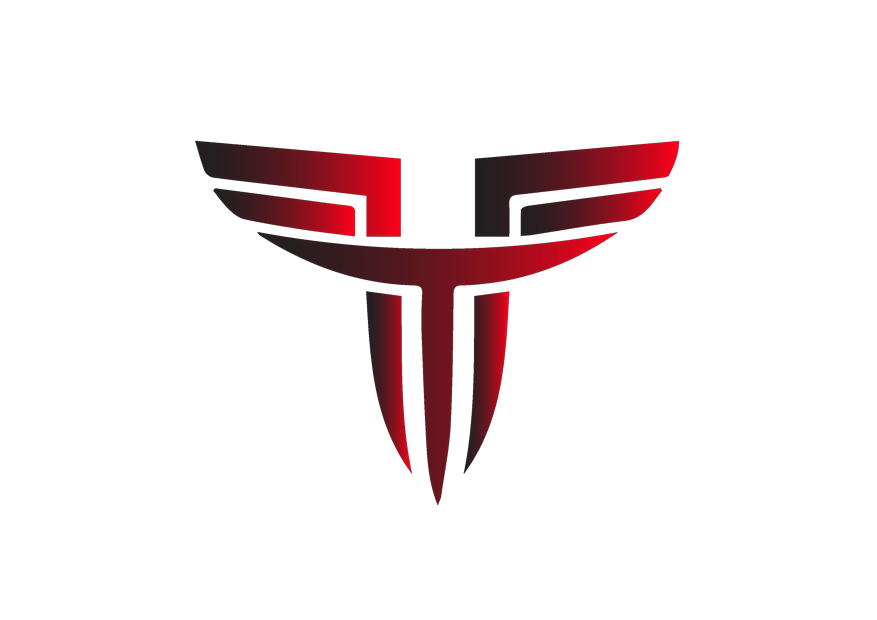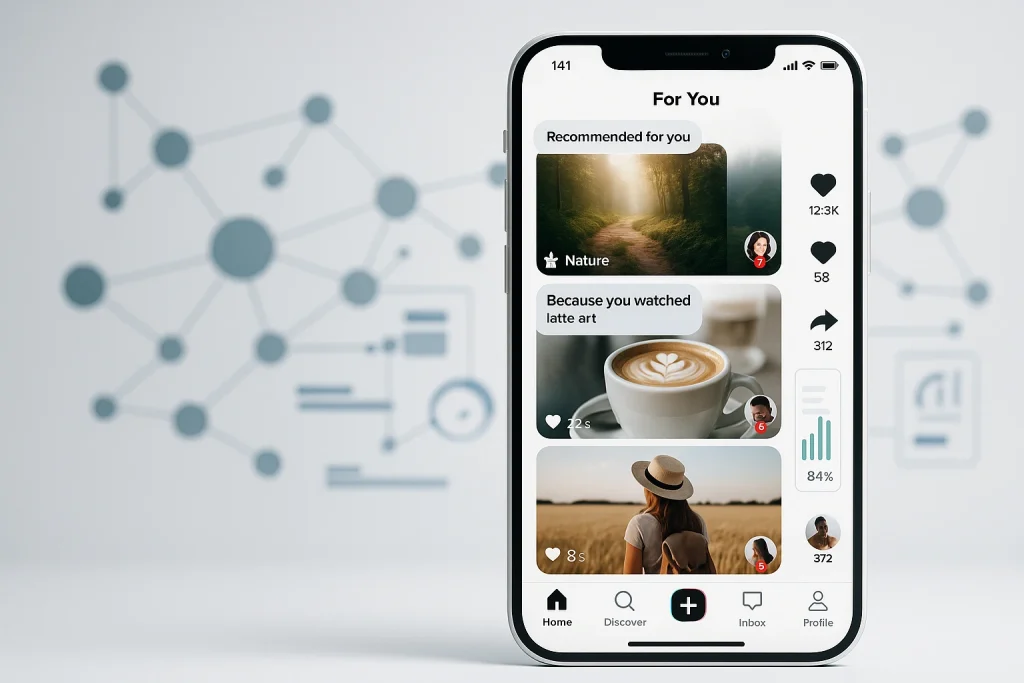
Stop building your content empire before you’ve won your first battle.
I see this pattern repeat itself every few weeks. A founder reaches out, usually after midnight, asking where to start with content marketing. Their competitor just launched a blog with 50 articles. Another one has a podcast. There’s a newsletter everyone’s talking about. Meanwhile, they’re sitting there with zero content, a small team, and that familiar startup anxiety creeping in.
Here’s what I tell them, and honestly, it might sound too simple: Just LinkedIn. That’s it. Nothing else. At least not yet.
Most founders think they need to be everywhere at once. Build the blog library. Launch email campaigns. Post across every channel. That approach sounds logical until you remember something crucial. You’re probably a team of one, maybe two if you’re lucky. Spreading yourself thin doesn’t make you visible. It makes you invisible everywhere.
The Beautiful Asymmetry of LinkedIn Right Now
LinkedIn has created something rare in today’s marketing landscape. With 1.2 billion members worldwide, the platform offers massive reach, yet only about 1% of users post weekly. Think about that imbalance for a second. You have this enormous professional audience, but almost nobody is consistently creating content for them.
That’s not just an opportunity. That’s a wide-open door.
Your buyers are already there, too. Over 50% of decision-makers spend an hour or more per week reading thought leadership on LinkedIn, and 95% of B2B buyers say good thought leadership makes them more open to outreach. They’re not just scrolling mindlessly like they might on other platforms. They’re actively looking for insights that could change how they do business.
Compare this to traditional SEO, where you’re competing against established domain authority you don’t have yet. LinkedIn accounts for 46% of social traffic to B2B websites, making it far more effective than spreading resources across multiple channels. The playing field is different here. LinkedIn rewards engagement and how long people actually read your stuff, not how many backlinks you’ve accumulated over a decade.
Speed Beats Authority (At Least at First)
Here’s something that changed how I think about early-stage marketing: speed matters more than perfection when you’re starting out.
With traditional SEO, you’re looking at six months minimum, often closer to a year, before you see meaningful traffic. That’s an eternity for a startup burning through runway. Meanwhile, a LinkedIn post you publish today could generate leads by tomorrow morning. I’ve seen it happen. Actually, I’ve made it happen.
The algorithm doesn’t care that you just launched last month or that your company page has 47 followers. It cares whether people stop scrolling to read what you wrote. Posts that generate engagement in the first 30-60 minutes can see significant increases in reach, rewarding quality and timeliness over historical authority.
This creates something beautiful for founders: a rapid feedback loop. You post something on Monday about a problem your product solves. By Monday afternoon, you know if it resonated. Did people comment or share or did anyone reach out? That immediate signal tells you what’s working before you’ve invested weeks building it out.
Learn what lands, iterate fast, then turn the winners into permanent content on your site. That’s the playbook.
People Buy From People, Not Logos
Nobody follows company pages. They follow human beings with perspectives, stories, and personalities worth paying attention to.
This is where so many B2B brands get it backwards. They pour resources into building up a corporate LinkedIn presence, crafting carefully vetted posts that sound like they went through three rounds of legal review. Then they wonder why engagement is flat.
Personal profiles on LinkedIn now significantly outperform company pages for engagement and visibility, with CEO content getting four times more engagement than other content from LinkedIn members. The data here is stark. Company page posts now reach only 1.6% of followers, down from 7% in 2021, while personal accounts benefit from algorithmic preference and stronger trust signals.
Buffer understood this from day one. Their founder uses LinkedIn to share revenue updates, progress, transparent internal decisions, even risky ones like offboarding inactive subscribers. Employees participate in experiments and openly discuss what’s working and what isn’t. The result? Nearly 200,000 active users and over $22 million in recurring revenue, built substantially on the back of authentic human conversations.
If you shared that you pivoted your pricing last week, or killed a feature users loved, or made a hiring mistake, that honesty builds more trust than a polished product announcement ever could. Audiences respond to evolution and transparency, not perfection.
LinkedIn Accelerates Everything (Including Finding Product-Market Fit)
The fastest path to product-market fit runs straight through real conversations with potential customers. LinkedIn gives you direct, unfiltered access to exactly those people.
Post about a specific problem you’re solving. The comments will immediately tell you whether it actually matters to your target audience. Share a feature you’re considering building. People will tell you if they’d pay for it or if you’re solving the wrong problem entirely. This kind of validation is impossible to get from analytics dashboards or carefully designed surveys.
I’ve watched founders use LinkedIn as a live focus group, testing messaging and validating product direction through what amounts to public thinking. One founder posted about considering switching from a free trial to demo-first model. The discussion that followed, with real users sharing their perspectives, gave her more clarity in 48 hours than months of A/B testing could have provided.
The feedback loop is fast, honest, and comes directly from people who might actually write you checks. That’s invaluable when you’re still figuring things out.
Start Conversations, Not Broadcasts
Most companies treat LinkedIn like a press release distribution service. New feature? Post about it. Funding round? Announce it. Podcast episode? Share the link. Then they sit back and wonder why nobody cares.
LinkedIn’s 2025 algorithm heavily favors content that sparks professional discussions, with posts generating back-and-forth conversations among industry peers receiving significantly more visibility. The platform rewards actual conversation, not announcement theater.
Think about the difference. A broadcast sounds like this: “Excited to announce our new feature! Check it out.” A conversation sounds like this: “We built this feature because 70% of our users struggled with [specific problem]. Here’s what we changed and the tradeoff we made. How do you handle this?”
One invites people to engage. The other just asks them to acknowledge you said something.
If I were starting from scratch today, here’s exactly what I’d do. Post useful observations from building the company. Comment back on everything. Ask for perspectives, not likes. Actually engage with people who interact with your content, treating every comment like the start of a real conversation rather than a metric to track.
Your fingerprints should be all over the ideas you share. Raw, unfiltered, sometimes wrong, but always genuine.
Think Out Loud (Even When You’re Not Sure Yet)
The most compelling voices on LinkedIn would rather be early and occasionally wrong than late and perfectly polished. There’s real wisdom in that approach.
Instead of waiting until you have six months of data proving your hypothesis, share what you’re thinking now. “We just decided to kill our free trial. Switching to demo-first instead. Goes against everything we know about product-led growth, but our data shows most signups never activate. I’ll report back on whether this was genius or catastrophically stupid.”
That kind of transparency does two things simultaneously. First, it invites discussion from people who’ve faced similar decisions. Second, it shows you’re actually building in public, not just marketing in public. There’s a massive difference.
You’re not on LinkedIn to sound like every other thought leader. You’re there to develop your own voice, even if some of your takes turn out incomplete or need refinement. The willingness to think publicly, to evolve your perspective based on feedback, to admit when you got something wrong — that’s where real authority gets built.
Pick One Problem Space and Own It
When you’re starting out, the temptation to talk about everything is overwhelming. You want to seem knowledgeable, well-rounded, present on every trending topic. Resist that urge completely.
Choose one problem your ideal customer genuinely cares about, then talk about it repeatedly until you’re known for that specific thing. If you help B2B SaaS teams reduce churn, every post should connect back to that theme. Onboarding issues, usage patterns, customer success frameworks, retention economics. Stay in your lane until you’ve actually become the go-to voice on that topic.
Carve out your niche first. Branch out later once you’ve established authority. Otherwise you’re just adding noise to an already noisy platform.
Format for How People Actually Read
LinkedIn’s algorithm analyzes content quality through factors including depth and originality of insights, with optimal post length between 900-1,200 characters. The platform rewards content that holds attention, keeps people reading, and sparks genuine interaction.
Start with a hook that stops the scroll. Something like: “We deleted our entire onboarding flow, and activation rate jumped 40%. Here’s what happened.” That’s short, surprising, and promises actual value if someone keeps reading.
Then deliver on that promise efficiently. Two to three beats of evidence. One clear takeaway. Maybe a question at the end that invites perspective. Keep it tight and scannable, because posts have extended lifespans, remaining visible in feeds for multiple days when they generate meaningful conversation.
The format matters as much as the insight. Present your best thinking in a way that respects how people consume content on the platform.
Find Your Rhythm (Then Stick With It)
Consistency creates visibility, but you need to build the habit before you worry about optimization.
Start with once or twice per week. Just get comfortable pressing publish, developing your voice, seeing what resonates with your specific audience. Many successful strategies involve posting 3-4 times weekly during peak engagement windows of 7-9 AM or 5-7 PM local time, but frequency means nothing if you haven’t figured out what to say yet.
A simple rhythm works: Monday lesson from the previous week. Friday insight about what you’re working on now. Build that habit for yourself and create predictable touchpoints for your audience. Adjust based on what the data actually shows you about engagement patterns.
Posting more frequently will help you reach more people eventually. But first, just show up consistently and build momentum. The rest follows naturally from that foundation.
Resist the Multi-Channel Trap
Here’s where most founders sabotage themselves. They see momentum on LinkedIn and immediately think, “Great! Now let’s add a blog, launch a podcast, start that newsletter, maybe try TikTok…”
Going multi-channel too early kills momentum exactly the same way going multi-product too early kills startups. You divide limited resources across too many fronts, none of them get the attention they need, and everything suffers.
97% of B2B marketers use LinkedIn for content marketing, and 40% rate it as the most effective channel for driving high-quality leads. When one channel is working this well, the strategic move is doubling down, not diversifying.
The only exception I’d make? Competitive search advertising on Google. If there’s a clear, high-intent keyword where you can profitably outbid an incumbent, that might be worth testing. But generally, focus beats fragmentation every time.
Master LinkedIn first. Build an audience, understand your message, prove your model. Then consider expanding, but only when you have the resources and clarity to do it right.
Two Assets That Actually Matter (Once You Have Momentum)
Eventually, you’ll want to add two specific pieces to your content foundation. Not instead of LinkedIn. Alongside it.
Case studies prove you’re not just talking. They show actual customer wins, real problems solved, measurable results achieved. Start with one solid story. Document the challenge, your approach, the outcome with specific numbers if possible. Get the logo and a quote if you can. Then publish it on your site as something you can reference in LinkedIn posts and send to prospects who need proof.
High-intent answer engine optimization (AEO) catches people actively searching. Take your best LinkedIn content, the posts that generated real engagement, and turn them into blog posts on your site. Focus on two or three topics buyers actually search for: what-is explainers that define your category, competitive comparisons, questions your sales team hears repeatedly.
These rank faster than traditional SEO because they’re narrow and specific. You’re targeting long-tail keywords you can actually own rather than broad terms dominated by competitors with years of domain authority. Plus, you’re building your email list through content that’s already proven to resonate.
Case studies legitimize your claims. AEO makes you findable. Together they turn your LinkedIn presence from interesting thoughts into tangible business results.
The 30-Day LinkedIn Challenge (Start Today)
Here’s my challenge: Post three times per week for 30 days. That’s it. Twelve posts total.
Sounds simple, but most founders quit too early. They try for a week, don’t see immediate results, and decide LinkedIn doesn’t work for them. Usually they cite being too busy or not having enough content ideas. Those are excuses, not reasons.
Get an accountability partner. Find another founder, set up a weekly check-in, hold each other to actually hitting publish. Or reach out to me directly. Seriously. I’ll be your accountability buddy if you need one.
As the habit develops, start replying to comments, engaging with other founders’ content, reposting thought leaders with your own perspective added. But first, focus solely on posting. Don’t worry about going viral or optimizing for maximum engagement. Just build your presence, generate feedback, test what resonates with your specific market.
Month two, scale what works. Add more posts around topics that generated discussion. Turn your top performers into full blog articles. Document your first case study if you’ve closed customers. Consider bringing in help now that you know what message you’re trying to amplify.
By month three, you should be posting 12 or more times monthly, have at least one strong case study published, and have a few strategic AEO articles capturing search intent. Keep LinkedIn as your primary engine while layering in these supporting assets.
Focus is the actual growth strategy here. The discipline to do one thing exceptionally well before adding more.
When Everyone Else Is Everywhere (You Can Win By Going Deep)
A LinkedIn-first strategy feels narrow. Almost uncomfortably narrow when you look around and see competitors building elaborate content operations across every possible channel.
But here’s what I’ve consistently observed: Founders who focus on LinkedIn learn what messaging actually resonates, turn those insights into reusable assets, build their brand methodically. Within 90 days, they have clearer positioning and real momentum. Within six months, they have a functioning growth engine and established trust with their market.
Meanwhile, founders spreading themselves across five channels are still trying to figure out their message while managing five different content calendars. They’re exhausted, their team is stretched, and nothing’s really working yet because nothing’s getting the focused attention it needs.
Post for genuine conversations and real-time market data. Ship proof through well-documented case studies. Capture intent with a few smart AEO pieces targeting questions your customers actually ask. Focus on LinkedIn first, expand deliberately later.
That’s how you build momentum as an early-stage B2B startup. Not by being everywhere at once, but by being genuinely present and valuable in the one place that matters most right now.
If you’re ready to actually do this, Hyper Fuel can help you build this exact playbook. We work with founders who want to move fast, test smart, and build real audience before they build everything else. We know where to start because we’ve done it. Reach out when you’re ready to stop planning and start posting.
Frequently Asked Questions About LinkedIn Marketing for B2B Startups
Results can start appearing within days, not months. Unlike SEO which requires six to twelve months of patience, a strong LinkedIn post today can generate meaningful engagement and even inbound leads by tomorrow. The key is consistency paired with genuine value. Most founders see their first real traction within the first 30 days of regular posting.
Always prioritize your personal profile. Company page organic reach has declined dramatically, now reaching only about 1.6% of followers. Personal profiles receive significantly more visibility and engagement because LinkedIn’s algorithm favors authentic human voices over corporate accounts. Build your founder brand first, and the company benefits automatically.
Start with two to three posts weekly to build your habit and voice. Once you understand what resonates with your audience, scale up to three or four times weekly. Consistency matters more than frequency when you’re starting. Better to post twice weekly without fail than attempt daily posts and burn out after two weeks.
Content that solves real problems, shares transparent insights about building your company, and invites genuine discussion performs strongest. Posts between 900-1,200 characters that start with compelling hooks and end with questions generate the most engagement. Short-form video and carousel posts also drive significantly higher interaction when they deliver concrete value.
No. Overthinking strategy becomes procrastination disguised as planning. Start by sharing one genuine observation from your week building the company. Document one decision you made and why. Ask one question your target customers are wrestling with. Strategy emerges from doing, not from planning to do.
Your daily work building a startup generates endless content. Customer conversations, product decisions, pricing experiments, hiring challenges, feature prioritization, competitive insights. all of these translate into LinkedIn posts. The question isn’t where to find ideas, but which of the many ideas from your work you’ll share this week.
Your competitors seeing your content means it’s working. The insights that help your ideal customers will reach them regardless of whether competitors notice. Besides, execution and authentic voice matter far more than any single idea. Transparency builds trust faster than secrecy builds advantage in today’s market.
Respond thoughtfully and professionally. Negative comments often spark the most valuable discussions and show you’re addressing real concerns rather than just collecting easy agreement. Thank people for their perspective, address legitimate points directly, and keep the conversation productive. Healthy disagreement demonstrates confidence and builds credibility.
Wait until you’ve established organic presence and understand what messaging resonates. Use organic posts to test ideas, then amplify proven winners with targeted ad spend. Jumping straight to paid promotion without validating your message organically wastes budget and teaches you nothing about what actually works.
Absolutely. Your best-performing LinkedIn posts should become blog articles on your website, email newsletter content, and foundations for case studies. LinkedIn serves as your testing ground for ideas that earn permanent homes elsewhere. Let engagement data guide which content deserves expanded treatment.
Lean heavily toward thought leadership and useful insights rather than company announcements. Share the thinking behind your updates rather than just the updates themselves. Instead of announcing a new feature, explain the problem it solves and why you prioritized building it. Context and perspective beat announcements every time.
Track engagement rate, not just reach. Are people commenting substantively and are you having real conversations in the comments? Are people reaching out via DM or you’re seeing inbound interest from content? These qualitative signals matter more than vanity metrics like impressions or follower count in the early stages.
Commit to at least 90 days of consistent posting before evaluating. Most founders quit too early, often within the first few weeks when their voice is still developing. The first month you’re finding your rhythm, the second month you’re refining what works, the third month you start seeing compounding returns. Give it a full quarter.





